
The post The Best Dog Breeds for Pheasant Hunting appeared first on A-Z Animals.
Pheasant hunting is a long-standing fall tradition across North America and Europe. Hunters live for that heart-pounding moment when a pheasant bursts from the grass. But a good shot isn’t the only key to success. The real work is done by well-trained dogs to find, flush, point, and retrieve these elusive birds. In this article we’ve put together a pack of some of the most popular pheasant-hunting dogs in the world.
Pheasant Hunting

Pheasants are indigenous to Asia.
©chris276644/Shutterstock.com
Pheasants are ground-dwelling birds with colorful plumage. They remain hidden until danger is close, then burst into the air in quick, explosive flight. Originally native to Asia, they were introduced to North America in the late 1800s and quickly adapted to farmland and prairie. Unlike many introduced species, pheasants didn’t disrupt native ecosystems in a major way but were able to inhabit a niche similar to the ways of prairie chickens and grouse. In addition to wild pheasants, many are raised on farms and released for hunting purposes.
Pheasant hunting usually takes place in the fall, when the birds are fully grown and active in high grass, crop fields, and brushy undergrowth. The hunt is typically done on foot with trained dogs that locate and flush birds from cover. Hunters use shotguns and aim for quick, clean shots as the birds take flight. Pheasant meat is quite tasty when well-prepared and is an expensive delicacy for people who don’t hunt.
Training Bird Dogs

A hard-working bird dog retrieving a pheasant.
©Ksenia Raykova/Shutterstock.com
Pheasant dogs work in three categories: pointers, flushers, and retrievers. Choosing the right dog is one of the most important decisions a hunter will make because of the training time, effort, and maintenance expense of raising a hunting dog. The choice depends on terrain, climate, hunting style, and the temperament of both the dog and the hunter.
Trainers move bird dogs through careful stages. After basic socialization, pups learn basic commands before being introduced to birds and gunfire so they build excitement instead of fear. Field training develops their specialty—pointers hold, flushers drive birds up, and retrievers mark and return game softly. Over time, steadiness and communication become the focus, with whistle or hand signals keeping dog and handler working as one. The best hunting dogs read the land and the wishes of their human instinctively. Here are some of the breeds that have earned a reputation among hunters for their performance and loyalty.
Labrador Retriever
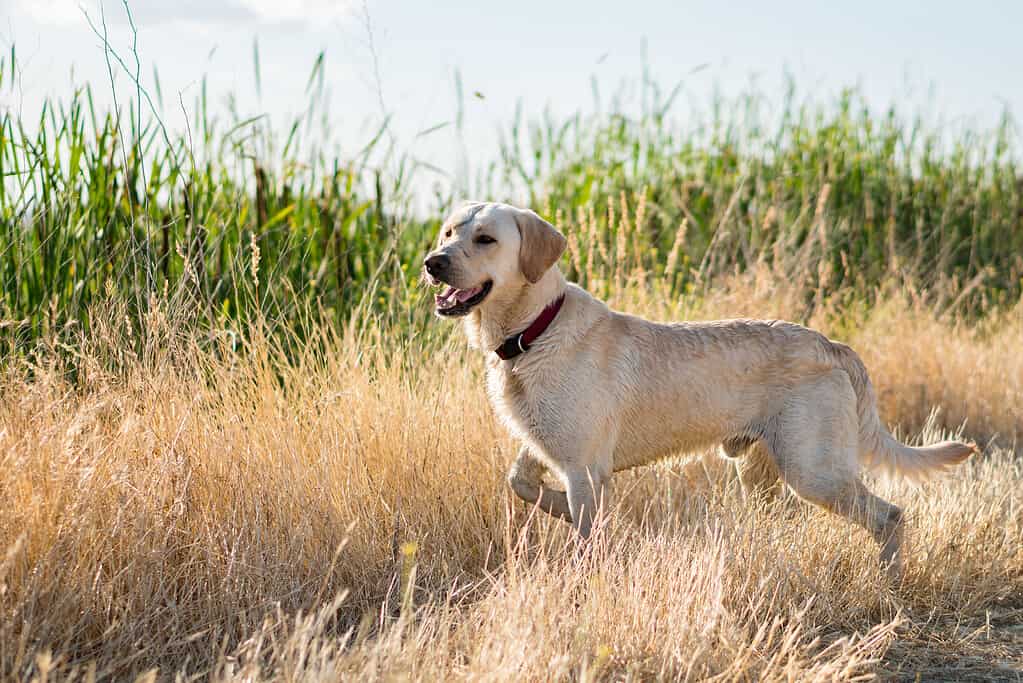
A yellow lab, pointing.
©RelentlessImages/Shutterstock.com
Few breeds command as much respect as the Labrador retriever. Labs combine intelligence, drive, and an easy-going temperament that make them exceptional hunting partners and family companions. Their even pace keeps them within gun range, allowing hunters to stay connected and control the pace of a hunt. Labradors are particularly skilled at tracking running birds and flushing them decisively. This is important because some birds prefer sprinting to get away and need a little extra motivation to fly. Labradors are able to transition between fields and wetlands and have a calm demeanor.
English Springer Spaniel
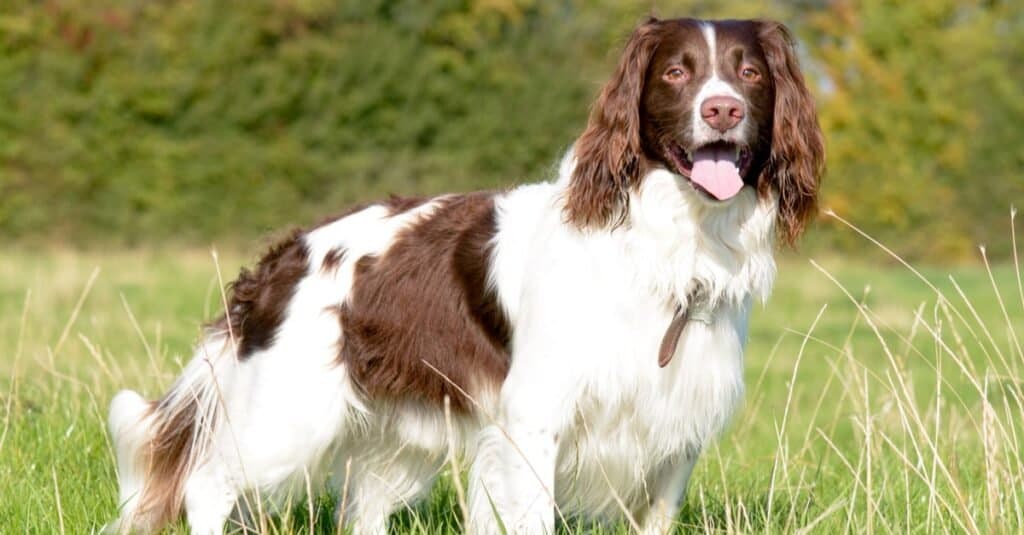
English springer spaniels have an excellent sense of smell.
©Martin Christopher Parker/Shutterstock.com
The English springer spaniel is known as an energetic, hard-working, and determined breed. They do well in dense, tangled cover where pheasants hide. These dogs have excellent tracking skills to locate birds and flush them into range. They also work close to their handlers, which fosters teamwork and control. Finally, they are compactly built dogs, so many seasoned hunters consider them indispensable to reach birds sheltering in tight spaces.
German Shorthaired Pointer
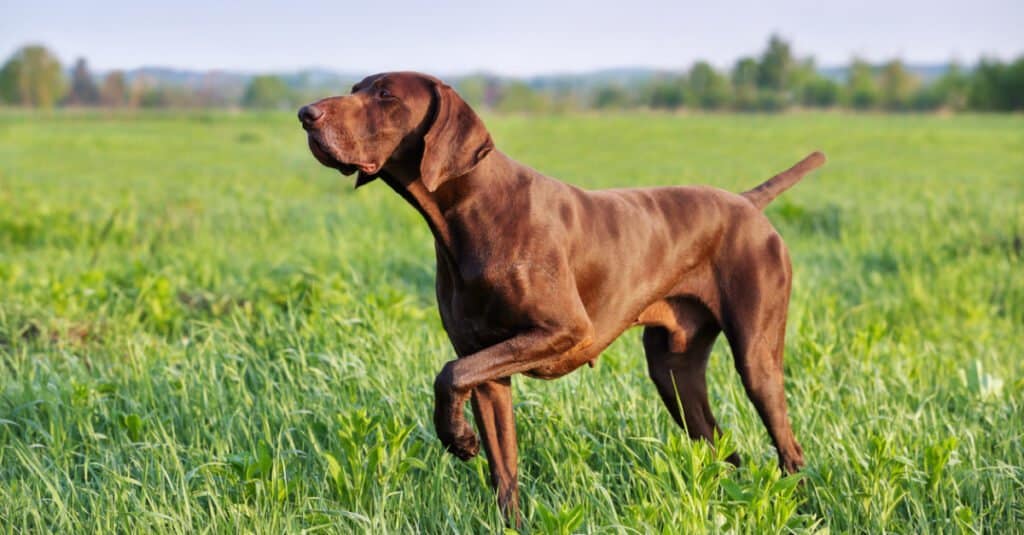
This German shorthaired pointer shows off a beautiful coat and regal pose.
©Vitalii_Mamchuk/Shutterstock.com
The German shorthaired pointer has a combination of intelligence, stamina, and muscular athleticism. It works comfortably in grasslands or the marsh. With its highly sensitive nose, it makes an excellent tracker, pointing precisely and confidently. They are versatile enough to work with hunters pursuing multiple species throughout the season, with the endurance to keep up the pace for long days across a variety of terrain.
Brittany

A Brittany puppy learning to point.
©Lindsey Stevens/Shutterstock.com
Compact, agile, and full of personality, the Brittany is a good choice for hunters who prefer a close-working partner. Brittanys develop strong pointing instincts early in life and excel at hunting within shotgun range. Reportedly, they are eager to please, have quick reflexes, and a sensitivity to handler cues. Their small size is ideal for maneuvering easily through dense vegetation without tiring, making them well suited to the different kinds of landscapes you’ll find in pheasant country.
English Pointer
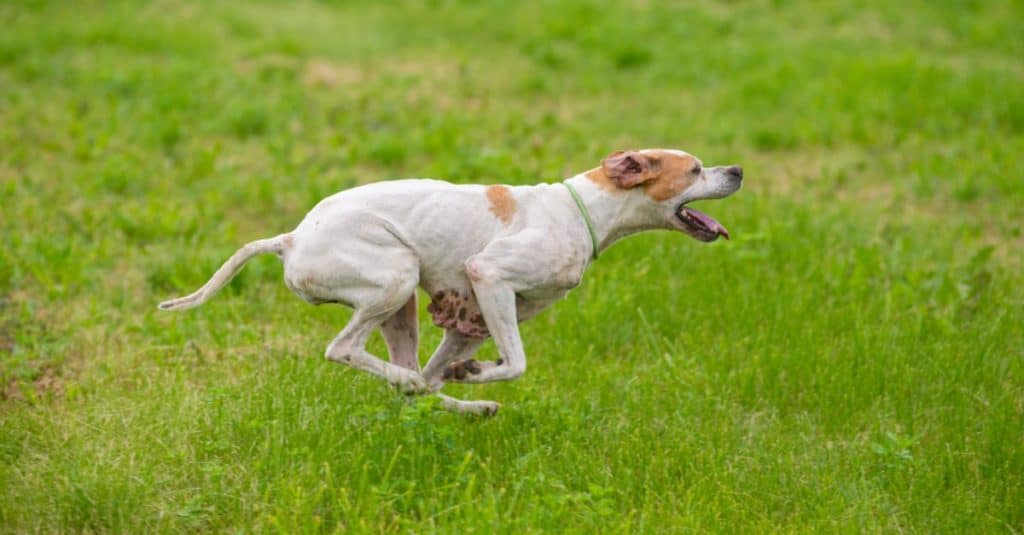
A red and white English pointer running full tilt.
©Anna Pozzi – Zoophotos/Shutterstock.com
The English pointer has been traditionally used for quail and prairie hunting, but selective breeding has produced lines that can work in heavier cover and handle unpredictable pheasant behavior. With a sleek build and short coat, they’re often a good choice for warmer climates. Breeders credit them with exceptional endurance and focus. They have a natural gift for covering ground and locating birds across wide-open spaces. As independent thinkers, pointers can range far ahead while maintaining awareness of their handler’s direction. It is no wonder they are now a favored pheasant-hunting breed.
Golden Retriever
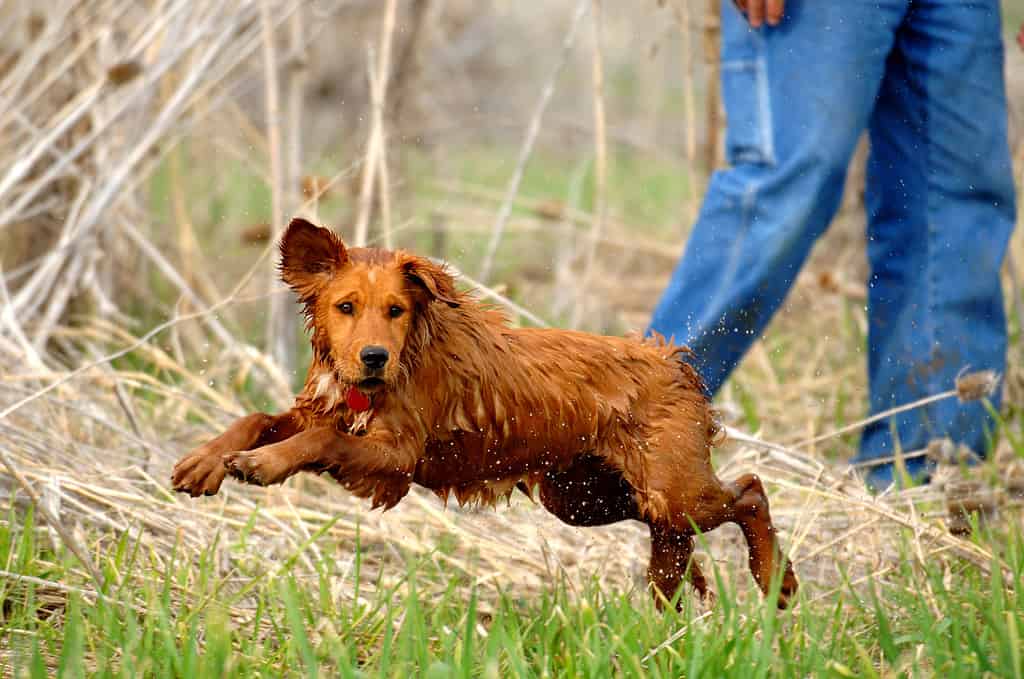
This young golden retriever is learning to retrieve toy decoys.
©Brent Paull/iStock via Getty Images
Hunters applaud the golden retriever not just for its temperament but also its field performance. Characterized as steady, intelligent, and obedient, goldens have a strong nose and an excellent work ethic in tall grass or dense cover. They are also natural water dogs, which makes them valuable for hunts near ponds or wetlands. Hunters should select field-bred lines, as some pet-bred goldens have lost the intensity needed for demanding fieldwork.
German Wirehaired Pointer
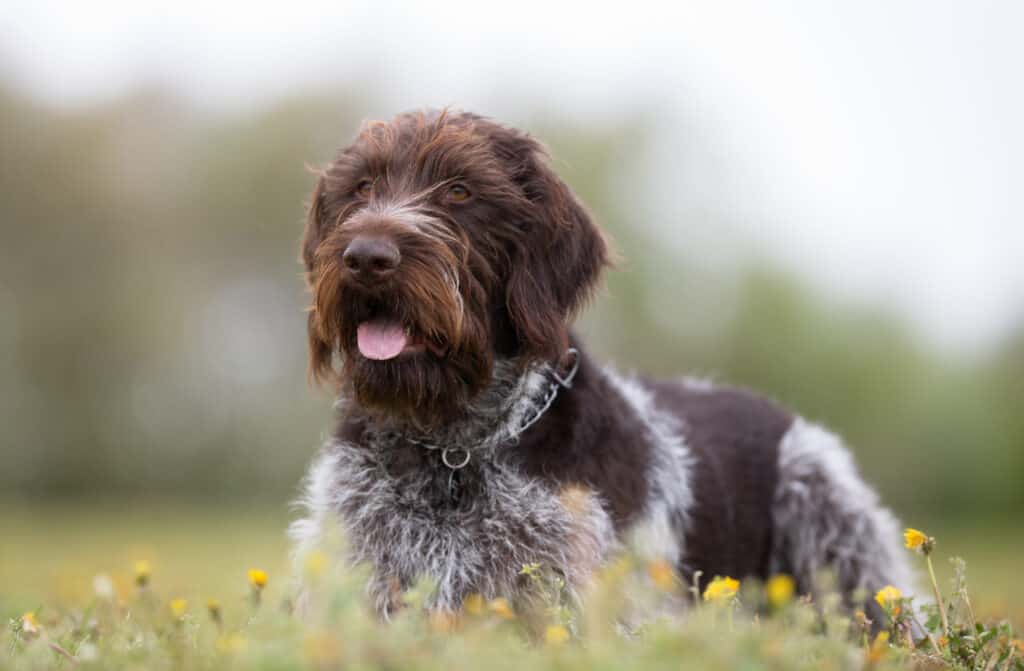
A purebred German wirehaired pointer.
©iStock.com/Bigandt_Photography
The German wirehaired pointer is rugged, intelligent, and versatile. Their wiry, weather-resistant coats and high stamina make them suitable for cold or wet late-season hunts when conditions test dogs and their handlers. Wirehairs have a reputation for toughness and strong retrieving instinct. They track tirelessly, handle rough terrain with ease, and work well in both upland and wetland environments. This affectionate and determined dog is ideal for hunters seeking a dependable all-weather companion.
Pudelpointer
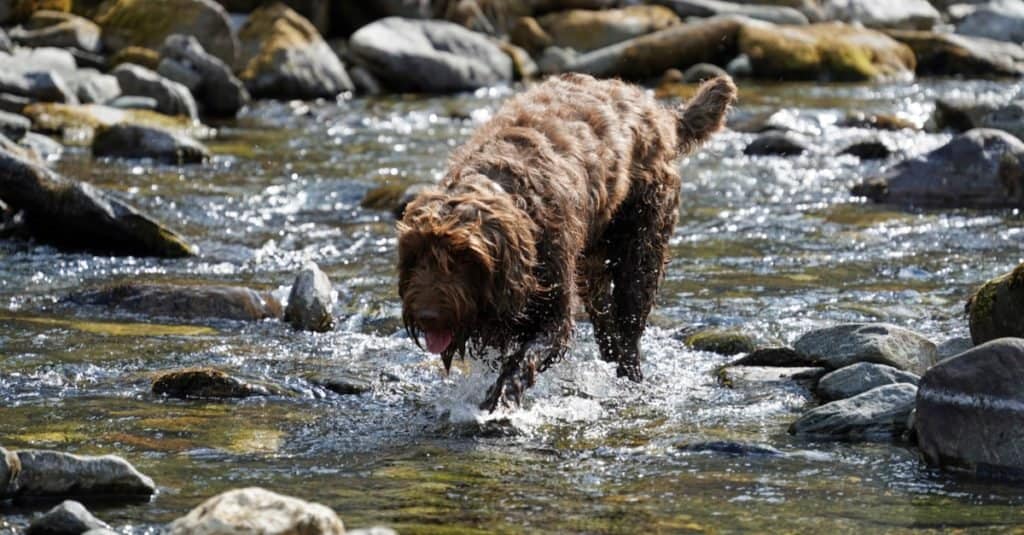
A pudelpointer wades in a mountain stream.
©Chamois huntress/Shutterstock.com
The pudelpointer blends the intelligence of the poodle with the drive of the German pointer, resulting in a versatile gundog prized for both field and water work. Its dense, protective coat allows it to handle thorns, cold, and wet conditions with ease. Though less common than other breeds, pudelpointers are gaining recognition among dedicated upland hunters for their steady temperament, quick learning, and endurance.
English Setter

Close up of an English setter.
©janveber/Shutterstock.com
Graceful and steady, the English setter is one of the oldest and most refined pointing breeds. Known for its fluid gait and exceptional scenting ability, the setter works methodically, adjusting to pheasants’ unpredictable habits. Its long coat offers some protection against thorns but requires regular maintenance. Setters are calm, trainable, and composed in the field, making them ideal for hunters who prefer a deliberate, controlled approach.
The Ecology of Pheasant Hunting

Pheasant hunters have a strong incentive to conserve sustainable populations of game animals and preserve the ecosystems that support them.
©Steve Oehlenschlager/Shutterstock.com
The environmental impact of pheasant hunting really comes down to how it’s managed. When hunters and landowners do it right, it can actually help conservation more than it hurts it. License fees, gear taxes, and donations fund habitat projects that keep grasslands, wetlands, and countless native species thriving. Hunting enthusiasts sometimes become strong advocates for preserving natural spaces.
Problems tend to show up when pen-raised birds are released in the thousands. This can crowd wild populations, wear out plant cover, or throw the balance off. The key is keeping releases and habitat care in step. Managed well, pheasant hunting keeps open spaces alive, supports healthy ecosystems, and reminds people of the impact they have on the land they use.
The post The Best Dog Breeds for Pheasant Hunting appeared first on A-Z Animals.
October 19, 2025 at 05:32PMDrew Wood
.jpeg)
.jpeg)

0 Comments